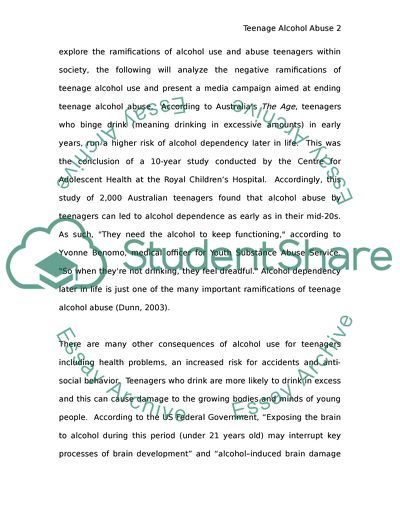Cite this document
(To End Teen Alcohol Abuse Research Paper Example | Topics and Well Written Essays - 2250 words - 1, n.d.)
To End Teen Alcohol Abuse Research Paper Example | Topics and Well Written Essays - 2250 words - 1. Retrieved from https://studentshare.org/social-science/1724591-analytical-paper
To End Teen Alcohol Abuse Research Paper Example | Topics and Well Written Essays - 2250 words - 1. Retrieved from https://studentshare.org/social-science/1724591-analytical-paper
(To End Teen Alcohol Abuse Research Paper Example | Topics and Well Written Essays - 2250 Words - 1)
To End Teen Alcohol Abuse Research Paper Example | Topics and Well Written Essays - 2250 Words - 1. https://studentshare.org/social-science/1724591-analytical-paper.
To End Teen Alcohol Abuse Research Paper Example | Topics and Well Written Essays - 2250 Words - 1. https://studentshare.org/social-science/1724591-analytical-paper.
“To End Teen Alcohol Abuse Research Paper Example | Topics and Well Written Essays - 2250 Words - 1”, n.d. https://studentshare.org/social-science/1724591-analytical-paper.


